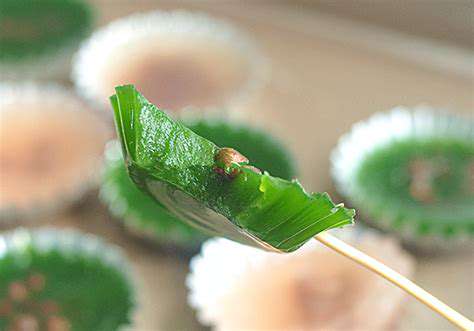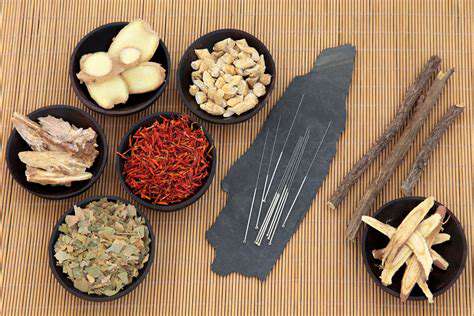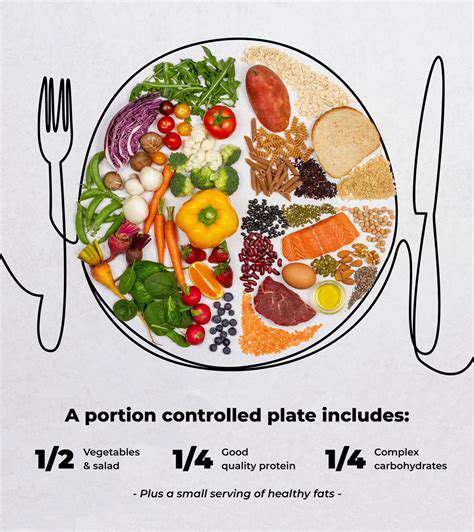Seasonal Eating in TCM: Aligning Your Diet with Nature
Seasonal Food Recommendations and Their Benefits
Spring's arrival signals a shift toward lighter fare after winter's hearty meals. Bitter greens like dandelion and mustard greens stimulate liver function, while young sprouts and shoots provide easily digestible nutrition. These foods mirror nature's awakening, offering cleansing properties that help the body shed winter's stagnation. The seasonal timing isn't coincidental—these plants emerge when our systems most need their specific nutritional profiles.
Summer's heat demands a different approach, with cooling foods taking center stage. Watermelon, cucumber, and mint aren't just refreshing—they help regulate body temperature and prevent dehydration. Research shows that these foods contain high water content and electrolytes exactly when we need them most. This natural synchronization demonstrates how seasonal eating creates an intuitive feedback loop between environment and physiology.
The transition between seasons requires particular attention, as our bodies adapt to changing conditions. Interspersing seasonal staples with transitional foods helps smooth these shifts. For instance, introducing more grounding root vegetables as summer wanes prepares the digestive system for autumn's heartier fare. This gradual approach honors the body's need for adaptation time, preventing the stress of abrupt dietary changes.
Spring: Nourishing the Liver and Gallbladder
Spring: A Time for Liver Revitalization
As nature renews itself in spring, our bodies undergo similar regenerative processes. The liver—our primary detoxification organ—becomes particularly active during this season, working to eliminate accumulated metabolic byproducts from winter's richer diet. This isn't mere metaphor; biochemical studies show liver enzyme activity increases in spring, aligning with traditional observations. Supporting this natural process through diet can enhance overall vitality and prevent seasonal sluggishness.
The liver's springtime activity correlates with increased production of certain enzymes and bile, substances crucial for breaking down fats and toxins. Modern functional medicine now recognizes what TCM has long practiced—that seasonal dietary adjustments can optimize these physiological processes. Light, fibrous foods aid the liver's cleansing work, while heavy, fatty foods can impede it during this critical renewal period.
Dietary Strategies for Liver Support
Specific nutrients become particularly important for liver health in spring. Sulfur-containing compounds in garlic and onions support phase II liver detoxification, while the chlorophyll in leafy greens helps neutralize toxins. These foods' seasonal availability isn't accidental—nature provides what our bodies need when they need it most. The image below highlights key liver-supportive spring foods. 
Incorporating bitter flavors stimulates bile production, enhancing digestion and nutrient absorption. While modern diets often lack these flavors, traditional cuisines worldwide include bitter tonics in spring. This universal practice suggests an intuitive understanding of seasonal needs that modern science is only beginning to quantify.
The Importance of Hydration
Water plays a multifaceted role in spring detoxification. Adequate hydration ensures efficient toxin elimination through both urinary and digestive pathways. Interestingly, many spring foods naturally contain higher water content, providing hydration along with nutrients. This built-in hydration system demonstrates nature's intricate design for seasonal health support.
Herbal teas offer additional benefits beyond simple hydration. Dandelion root tea, for instance, provides gentle diuretic properties while supplying liver-supportive compounds. These traditional remedies offer a nuanced approach to seasonal hydration that addresses multiple physiological needs simultaneously.
Herbal Remedies for Liver Support
Traditional herbs offer concentrated sources of bioactive compounds that modern research continues to investigate. Silymarin from milk thistle has demonstrated hepatoprotective effects in clinical studies, validating its traditional use. When combined with dietary approaches, these herbs can provide comprehensive seasonal support. However, professional guidance ensures safe and effective use, particularly for individuals with existing health conditions.
The resurgence of interest in adaptogenic herbs reflects a growing appreciation for traditional wisdom. These plants help the body adapt to seasonal stresses, supporting overall resilience. Their use in spring tonics represents an early form of preventive medicine now gaining scientific recognition.
Mindfulness and Stress Management
Psychological factors significantly influence liver function through the gut-brain-liver axis. Chronic stress impairs detoxification pathways, making stress reduction an essential component of seasonal liver care. Ancient practices like qigong and tai chi—traditionally performed outdoors in spring—combine movement, breathing, and mindfulness to address this connection holistically.
Modern stress-reduction techniques can be adapted to seasonal needs. Spring-specific mindfulness practices might focus on themes of renewal and growth, aligning mental patterns with the season's energetic qualities. This mind-body alignment enhances the benefits of dietary changes, creating a comprehensive approach to seasonal wellness.
Lifestyle Adjustments for Liver Health
Seasonal lifestyle modifications complement dietary changes. Earlier rising aligns with spring's lengthening days, supporting circadian rhythms that influence liver function. Increased physical activity mirrors nature's renewed energy, enhancing circulation and lymphatic drainage. These adjustments create synergy with nutritional approaches for comprehensive seasonal health.
Sleep patterns should also adapt to seasonal light changes. Research shows liver regeneration occurs primarily during sleep, particularly in the early morning hours. Adjusting bedtime to ensure adequate rest during peak regenerative periods maximizes the body's natural healing cycles.
Spring Cleaning for Your Body
The concept of spring cleaning extends beyond the home to personal health. Gentle dietary shifts prove more effective than extreme cleanses, which can stress the body. A gradual transition to lighter foods, increased hydration, and liver-supportive nutrients allows the body to detoxify naturally. This approach respects the body's innate wisdom while providing optimal support.
Seasonal eating patterns create a foundation for year-round health, with each season building on the last. By attuning to these natural cycles, we participate in an ancient rhythm that sustains both individual and planetary health—a concept increasingly relevant in our disconnected modern world.











